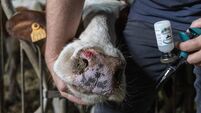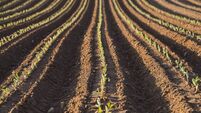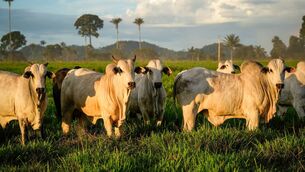Check currencies before you do a farm exchange
As the CAP enters a new era, and countries like Brazil emerge as our new competitors, faraway fields are looking greener.
Will the lure of "freedom to farm" on the other side of the world draw more farmers from the EU, where rules and regulations bear heavily on agricultural activities? Few people have a better understanding of the pros and cons of farming around the globe than Canadian Jack Wilkinson, president of the International Federation of Agricultural Producers.
But it's not rules and regulations, or even free trade agreements, that are uppermost in his mind when rating the farming industries across the continents; it's exchange rates.
Argentina is the prime example; a perfect farming country, he says, but for its volatile exchange rate.
Argentina has good quality land, low production costs, and export potential; but it has been through an 80% currency devaluation; if the exchange rate swings the other way, exports disappear.
Born and raised on a family farm in Ontario, Canada, Wilkinson produces grains and oilseeds, and runs a beef cow and calf operation.
He says farming has been going well in his native Canada, at least until the export ban on Canadian cattle and beef after a single case of BSE was discovered in Alberta in May. But if the exchange rate moves 8 cents in the wrong direction, Canadian farmers will be in even bigger trouble than BSE.
"Farming around the world is so unpredictable that the only cushion is to expand and expand", says Jack Wilkinson. He says beef producers for the world market must also usually contend with a six-year cycle from boom to bust.
But currency fluctuations can throw everything out of synch.
He agrees that there was a huge influx of EU farmers into Canada, but says this is nearly over, and Canada's attractions as a farming territory have diminished because land has got too dear.
Another factor which he sees bringing big changes to world farming trends is increasing production from 10 Central and Eastern European countries when they join the EU next year.
Wilkinson leads a federation of 500m farmers in 100 countries (This includes EU farmers, because COPA, the EU's farm union, is a member of IFAP).
Whatever about his most prosperous farming members, he can easily identify the worst off.
They are the starving farmers who cannot feed themselves, mostly found in Africa.
There is a commitment in the upcoming WTO talks to help them, but Wilkinson is somewhat fearful of lack of progress in WTO talks.
Upcoming US presidential elections leave a very short window for negotiations, and he fears an increasingly isolationist attitude by US negotiators, making progress difficult.










